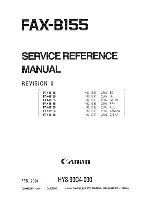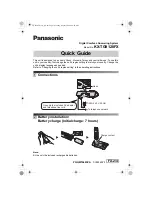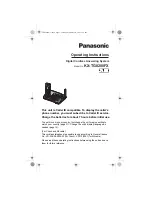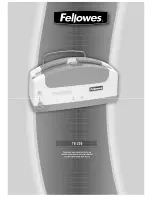
Input/output setting mode
[15]-5
(3) Input signal setting table
Serial
No.
Function
Specifications
1 FSP
Each time the input signal (FSP) is turned ON, the work holder output [1], [2], [3],
[4], [5], [6], [7] and [8] will turn <<ON>> in sequence.
When the ["valid work holder number setting (FN)" is set to "1" for the program/
work holder mode], this input signal (FSP) will be invalid.
2 FSM
Each time the input signal (FSM) is turned ON, the work holder output [8], [7], [6],
[5], [4], [3], [2] and [1] will turn <<ON>> in sequence.
When the ["valid work holder number setting (FN)" is set to "1" for the program/
work holder mode], this input signal (FSM) will be invalid.
3 FP1
Each time the input signal (FP1) is turned ON, the work holder output [1], [2], [3]
and [4] will turn <<ON>> in sequence.
If either of the following is established, this input signal (FP1) will be invalid:
[When "number of work holder division setting (OFB)" in the program/pressure
mode is set to NO or 4]
[When the "valid work holder number for divided work holder setting (F21N)" is set to 1]
4 FM1
Each time the input signal (FM1) is turned ON, the work holder output [4], [3], [2]
and [1] will turn <<ON>> in sequence.
If either of the following is established, this input signal (FM1) will be invalid:
[When "number of work holder division setting (OFB)" in the program/pressure
mode is set to NO or 4]
[When the "valid work holder number for divided work holder setting (F21N)" is set to 1]
5 FP2
Each time the input signal (FP2) is turned ON, the work holder output [5], [6], [7]
and [8] will turn <<ON>> in sequence.
If either of the following is established, this input signal (FP2) will be invalid:
[When "number of work holder division setting (OFB)" in the program/pressure
mode is set to NO or 4]
[When the "valid work holder number for divided work holder setting (F22N)" is set to 1]
6 FM2
Each time the input signal (FM2) is turned ON, the work holder output [8], [7], [6]
and [5] will turn <<ON>> in sequence.
If either of the following is established, this input signal (FM2) will be invalid:
[When "number of work holder division setting (OFB)" in the program/pressure
mode is set to NO or 4]
[When the "valid work holder number for divided work holder setting (F22N)" is set to 1]
7 IFR
When the input signal (IFR) is ON, all (ON state) work holder outputs will turn
<<OFF>>.
8 A2F
Each time the input signal (A2F) is turned ON, the following operations (1), (2) and
(3) will be repeated in sequence.
Note that this is valid only when the [pneumatic type two stage work holder setting
(AF2.)] function in the program mode is set to [ON].
(1) When the input signal (A2F) is turned ON [first time], the pneumatic type two
stage work holder low pressure output (AFL) will turn <<ON>>, and the
pneumatic type two stage work holder residual pressure removal output (AFE)
will turn <<OFF>>.
(2) When the input signal (A2F) is turned ON [second time], the pneumatic type two
stage work holder low pressure output (AFL) will turn <<OFF>>, pneumatic type
two stage work holder high pressure output (AFH) will turn <<ON>>.
(3) When the input signal (A2F) is turned ON [third time], the pneumatic type two
stage work holder high pressure output (AFH) will turn <<OFF>>, and the and
the pneumatic type two stage work holder residual pressure removal output
(AFE) will turn <<ON>>.
9…16 IF1…IF8
When the input signal (IF1) turns ON, the work holder output 1 (OF1) will turn ON.
When the input signal (IF1) is turned ON again, the work holder output (OF1) will
turn OFF.
(Same for IF2 to IF8).
17…24 F1C…F8C
When the input signal (F1C) is ON, output (ON) of the work holder output 1 (OF1)
will be prohibited.
[Operation of the work holder output 1 input signal (IF1) is invalidated.]
(Same for F2C to F8C).
25 OFC
When the input signal (OFC) is ON, output of the work holder output 1 (OF1) to
work holder output 8 (OF8) are all prohibited.
[Operation of the work holder output 1 input signal (IF1) to work holder output 8
input signal (IF8) is invalidated.]
Summary of Contents for PLK-E Series
Page 2: ......
Page 13: ...Explanations of basic screens keys and operations 3 6...
Page 15: ...Stitching data type and writing No 4 1...
Page 21: ...Reading writing and erasing data floppy disk 5 5...
Page 26: ...Reading writing and erasing data internal memory 6 4...
Page 28: ...7 1...
Page 35: ...Creating simple stitching data 8 6...
Page 39: ...Methods of creating stitching data 9 3...
Page 44: ...Methods of creating stitching data 9 7...
Page 54: ...Methods of creating stitching data 9 15...
Page 58: ...Methods of creating stitching data 9 22...
Page 63: ...Methods of creating stitching data 9 26...
Page 68: ...Methods of creating stitching data 9 30...
Page 72: ...Methods of creating stitching data 9 33...
Page 75: ...Methods of creating stitching data 9 35...
Page 79: ...Methods of creating stitching data 9 38...
Page 86: ...Modification mode 12 5...
Page 89: ...Modification mode 12 7...
Page 94: ...Modification mode 12 11...
Page 99: ...Modification mode 12 15...
Page 104: ...Modification mode 12 19...
Page 111: ...Modification mode 12 25...
Page 115: ...Modification mode 12 28...
Page 122: ...Modification mode 12 34...
Page 126: ...Modification mode 12 37...
Page 133: ...Modification mode 12 43...
Page 138: ...Modification mode 12 47...
Page 143: ...Modification mode 12 51...
Page 148: ...Modification mode 12 55...
Page 155: ...Data conversion mode 13 6...
Page 158: ...Data conversion mode 13 8...
Page 162: ...Data conversion mode 13 11...
Page 166: ...Data conversion mode 13 14...
Page 169: ...Data conversion mode 13 16...
Page 179: ...Data conversion mode 13 25...
Page 204: ...Program mode 16 5...
Page 205: ...Program mode 16 6...
Page 208: ...Program mode list 17 2...
















































